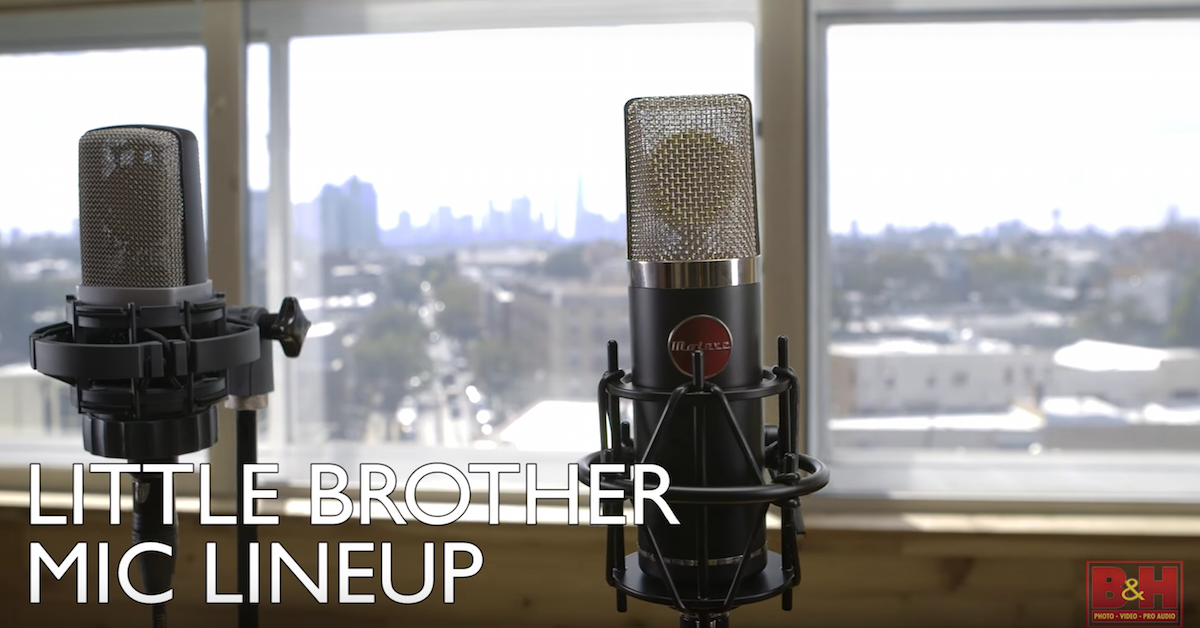A Basic Guide to Microphone Specifications
Article Content
Choosing a mic can be a daunting task when confronted with specification sheets littered with numbers that may seem meaningless since making comparisons across similar mics is not easily done. There is usually no hard reference or minimum level of acceptability to guide your choice. And often the measurement units or methods used vary across manufacturers, further complicating matters.
So many people turn to professional recommendations, endorsements, product reviews or the general reputation a microphone has earned in the industry over time as a way to choose. Live product demo comparisons are difficult to arrange with controlled circumstances, especially when considering how a mic will perform under various conditions or when recording particular sound sources. That said, a quality microphone will last a lifetime with proper care, so it is wise to research your choice in every way possible before dropping your hard-earned coin.
Understanding the spec sheet will help you compare mics, especially after the field has been narrowed down to a few possible choices. What follows is a comprehensive list of specifications you might come across in your search for the perfect.
Note: This article is not about choosing the best type of microphone for a particular purpose (e.g. dynamic, condenser, ribbon, etc.), it is about defining particular specifications and measurements so that comparisons between similar microphone types can be made and decisions can be informed.
Impedance
Impedance is an indication of resistance in an AC circuit measured in Ohms (Ω). An audio signal is considered an AC signal since it has both positive and negative currents. The input on a preamp has an input Load Impedance which must be greater than the output impedance of the microphone for the system to function properly.
The total output impedance of a mic is the total of the resistance of its electrical components. As a rule of thumb, the load impedance of a preamp or other device accepting the input from a microphone should be about 10x the output impedance of the input device.
“On any given microphone’s spec sheet, you’ll find a value for its output impedance. Any professional microphone is deemed “low-impedance,” which roughly means an output impedance in the range of 50Ω to 600Ω. Most professional mics have an output impedance between 150 to 250Ω.” (source)
Maximum SPL
Microphones have a limit in terms of SPL after which they will begin to distort. This is a limitation of the mic itself and cannot be corrected with gain staging. Some can actually be damaged from excessive levels. Ribbon mics are especially susceptible to high SPL levels. Also, certain mics have an Attenuation Pad setting (-10 or -20 dB) which can be employed for loud situations to prevent possible distortion.
Maximum SPL levels will usually be accompanied by an associated THD (Total Harmonic Distortion) level of .5 or 1%.
Self-Noise or Equivalent Noise Rating (ENR)
These two terms mean the same thing, both refer to the level of noise created by the circuitry of the mic itself. Self-noise is only a factor with active mics such as condensers. It is typically specified as a dBA level. “A Weighting is the most common weighting that is used in noise measurement … Like the human ear, this effectively cuts off the lower and higher frequencies that the average person cannot hear.” (source)
It seems obvious that the lower the dBA level of self-noise the better, so two mics can be easily compared as long as both are using dBA units. “Self-noise levels for condenser mics can be as low as 5 dBA for modern large diaphragm condenser mics.” Small diaphragm mics will be noisier at 12 to 18 dBA and smaller ones noisier than that at 22 to 27 dBA (Corbett 87). So clearly context is important since noise over 20 dBA may be more of an issue in quieter recording environments such as classical music settings.
Signal-to-Noise-Ratio
A ratio can be thought of as a fraction and in this case, the signal level would be in the numerator and the noise level in the denominator. Since you ideally want to maximize signal as compared to noise, the larger the numerator the better, and hence, the larger the Signal-to-Noise-Ratio or SNR the better. The measurement is typically taken with the mic in a 94 dB sound field. If you are only given a Self-Noise spec you can simply convert it to an SNR by subtracting it from 94 dB.
Example: SNR = 94 – Self-Noise
So the higher the self-noise, the lower the SNR.
Dynamic Range
This would be the range of SPL level between the noise floor produced by the mic (or Self-Noise) and Maximum SPL discussed above. Clearly, bigger is better with this spec as well.
Power Requirements
This refers to the external power requirements of the mic. A common need is for 48V of Phantom Power for condenser mics, which is normally supplied by the preamp via the XLR cable. Some mics also have an internal battery as well for situations where Phantom Power is not available. Power requirements are often expressed as a range of acceptable voltage.
Connector
XLR connections are the most common type for professional mics because XLR cables are balanced and can be run for long distances without inducing noise. But some specialty mics such as contact mics may have simple 1/4” or even 1/8” plugs.
Side-Address and End-Address
This relates to how to properly position or point a particular mic so that the source is “on-axis” as related to the polar pattern. Choosing what is better is a matter of context and the main purpose of the mic. For example, a side-address mic may be the best choice for snare drum since its positioning would be less obtrusive to the player.
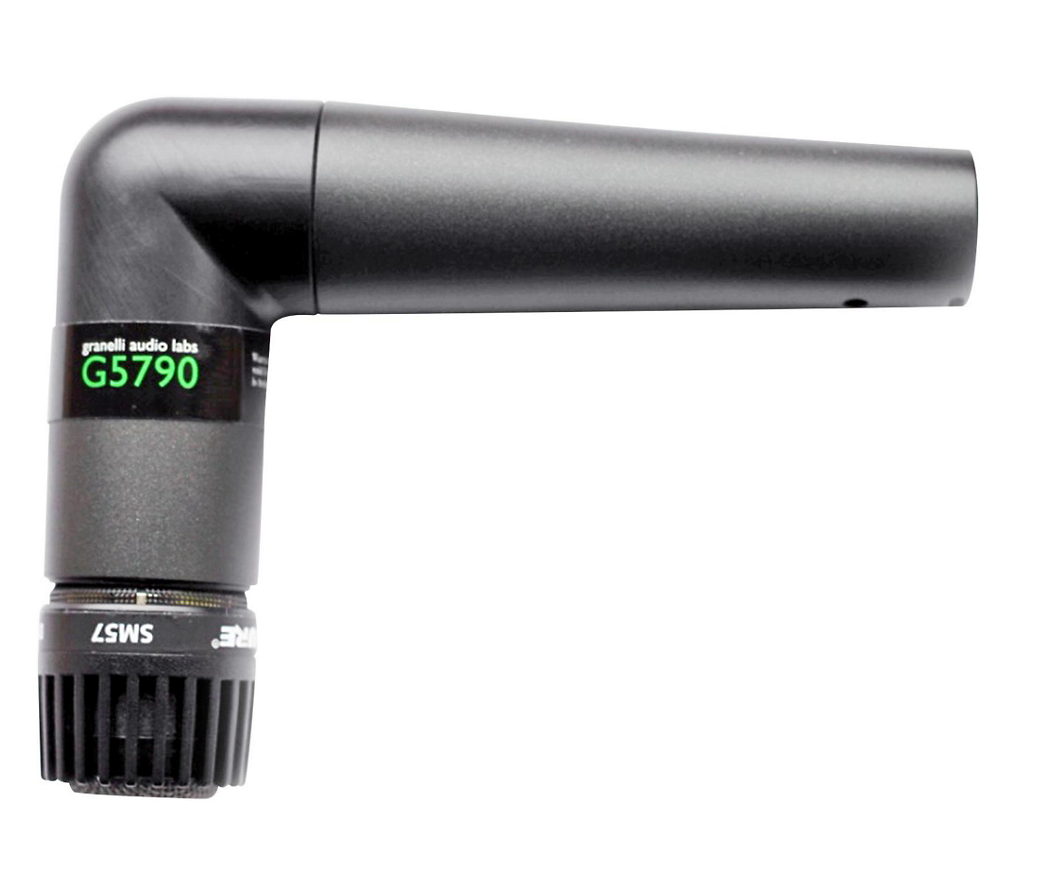
(source)
Above is a Shure SM57 capsule modified to be a side-addressed mic by Granelli Audio Labs.
Frequency Response Curve
The frequency response chart displays a graphic of how evenly a mic picks up various frequencies across the spectrum and indicates how certain frequencies will be attenuated or boosted by the microphone.
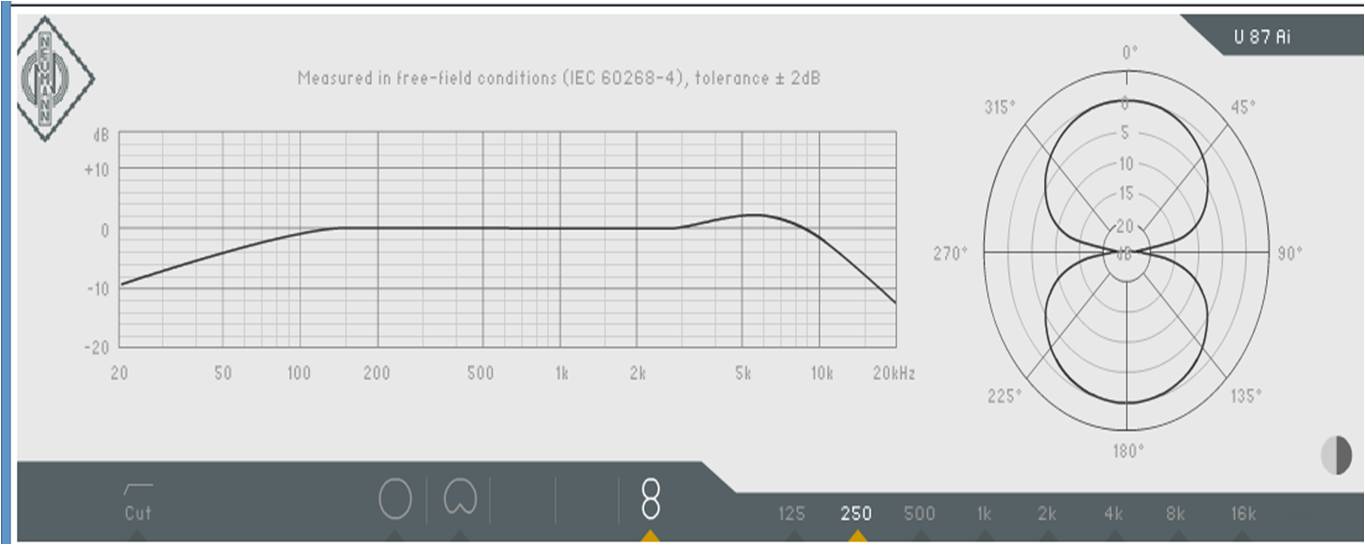
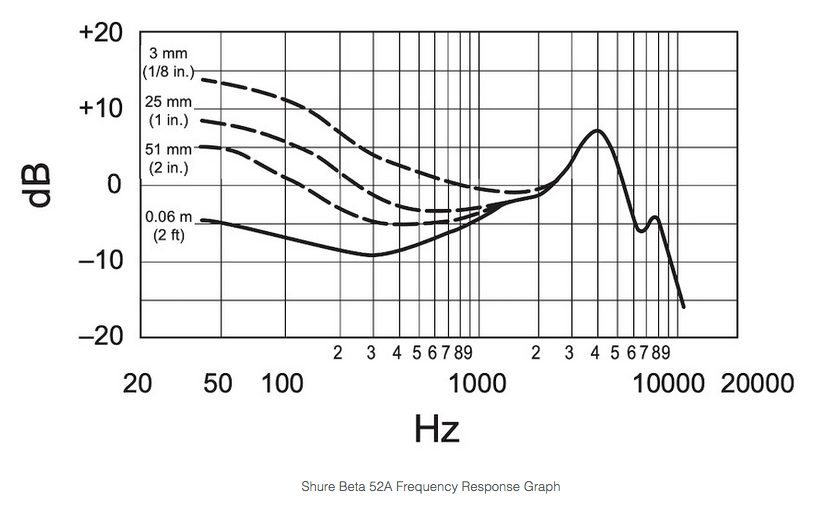
Roll-Off Options
Some mics have the ability to roll off bass frequencies at certain cutoff points such as the AKG C414 which offers bass cut filters at 160, 80 and 40Hz.
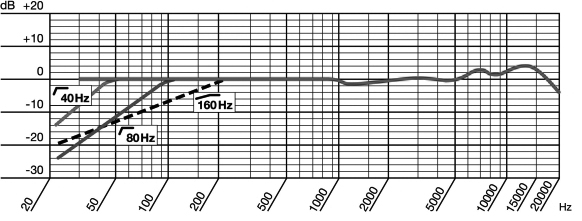
The Proximity Effect is a boost in bass response that occurs when a mic is placed very close (inches) to the source. This is usually displayed on the main frequency response chart as a dotted line or secondary curve that deviates from the main response curve. It should be noted that omnidirectional mics do not exhibit a proximity effect.
Check out “5 Things to Know About Proximity Effect”.
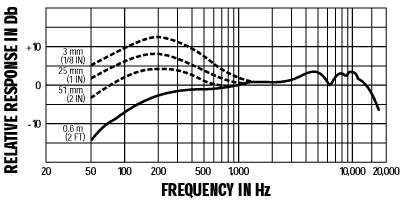
(ABOVE: Frequency response for the Shure Beta 57 showing various proximity effects)

(source)
Presence Peaks are also sometimes part of a microphone’s response curve and are essentially boosts in the frequency response somewhere between 3 kHz to 10 kHz. Certain mics are especially desired for the color they add to the sound such as the Neumann U87 on vocals. But sometimes lower presence peaks in the 3 kHz to 5 kHz range can sound harsh and higher peaks may be located near sibilances which can cause problems.
Matched Pairs
Serial number specific frequency charts are important for identifying Matched Pairs for stereo mic set-ups. All electronic circuits will have variations that should be minimized as much as possible for stereo miking. This usually implies buying mics in matched paired sets, to begin with.
More thorough spec sheets will include a Frequency Response and a tolerance such as 20 Hz to 20 kHz ±3 dB. This indicates a possible variation in response at the extremes of the given frequency range.
Polar Pattern
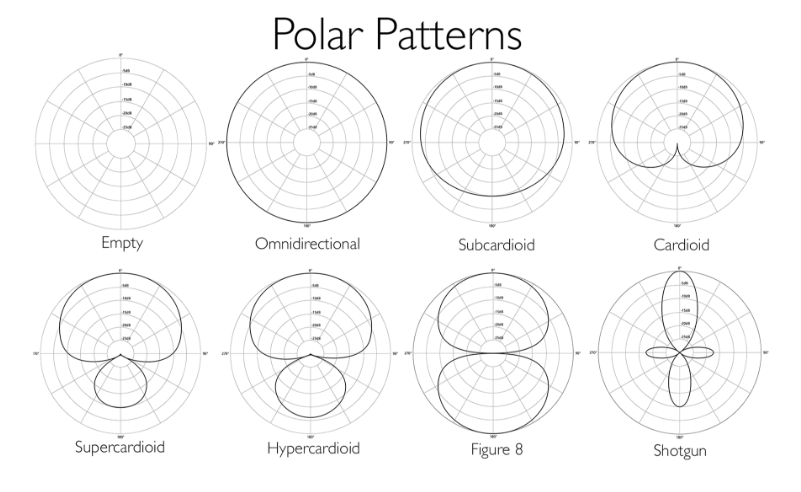
Polar patterns indicate the pick-up field of a microphone which will include the degree of side and rear rejection usually displayed as a graphic. Typical patterns are displayed below. Some mics have switchable pickup patterns liked the AKG 414, a highly useful feature that makes a microphone usable in multiple situations.
Off-Axis Frequency Response
This is a measure related to the directionality of the polar pattern in terms of specific frequencies. It is usually displayed as a graphic that shows how the pickup pattern varies at certain frequencies. If off-axis positions perform better with a particular mic, it will be less likely to color any spill from other sources in the space, resulting in a cleaner more intelligible mix that is less muddy, boomy or negatively colored.
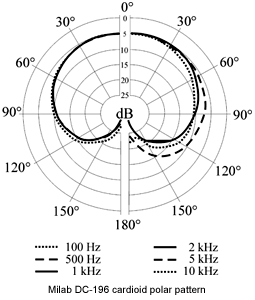
(source)
Transducer Type
This is the method used to transduce (or convert) changes in sound pressure to analogous changes in voltage. Possibilities could be a condenser, dynamic, ribbon, electret, contact, etc.
Diaphragm Size and Transient Response
The size of the microphone diaphragm affects frequency response and can have an impact on transient response time. It makes intuitive sense that a larger diaphragm will, in general, have a slower transient response than a small diaphragm mic. But this is not really quantified in a spec sheet.
Corbett observes:
“Dynamic mics, with their heavier, more sluggish diaphragms, cannot respond fast enough to accurately capture initial transients, so the attacks of sounds are compressed and subtlety distorted. In term of accuracy this is undesirable, but compressing the amplitude of the initial and loudest peaks of a sound means that the pre-amp gain needs to be turned up more to achieve good levels–increasing the sound’s average level. This results in a less transparent, but bigger, chatter, and more powerful sound that can be desirable for rock drums, electric guitars, and basses.” (Corbett 89)
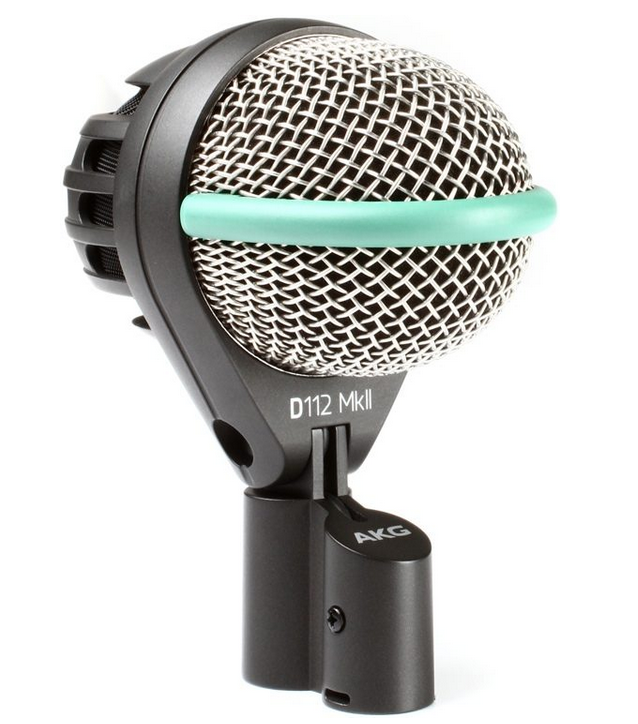
Sensitivity
This is a measure of a microphone’s electrical output in volts given a particular sound field usually based on a reference of 94 dB SPL. Some manufacturers use 74 dB.
Sensitivity can be expressed as mV/Pa (millivolts per Pascal) or mV/10 µbars (millivolts per microbars) Pascal and Microbars are units of pressure. 10 µbars = 1 Pascal (See the conversion chart below).

(source)
With sensitivity expressed in this way, the larger the number the better. For example: 27.5mV/PA would represent a higher sensitivity than 6.5mV/10 µbars
Some companies use what is referred to as a “-dB” format with either the 94 dB reference level or 74 dB. In this case, the smaller the negative number, the more sensitive the mic.
For example:
-31 dB re 1V/PA is better or more sensitive than -45 dB re 1V/PA
Corbett explains:
To compare two mics, when one quotes sensitivity as “-dB” to a 94 dB equivalent, and the other as “-dB” to a 74 dB equivalent reference level:
94 db reference equivalent = 74 dB equivalent – 20 dB
74 db reference equivalent = 94 dB equivalent + 20 dB
(Corbett 86)
The takeaway regarding this spec is that the higher the level of sensitivity, the less noise will be created by the preamp since less gain will be needed to compensate for the microphone’s output.
Conclusions
The specs are not the whole story and should certainly not be used as the sole factor for choosing a mic. Product reviews and professional endorsements can provide useful information for navigating the overwhelming variety of choices you may face. And of course, nothing beats hands-on experience and listening. But understanding how to read a spec sheet is crucial when comparing devices whether they be microphones or any piece of gear.
Reputable manufacturers will provide detailed measurements with industry-standard tolerances and margins of error, while those offering inferior products may try to persuade potential buyers with a lot of hyperbolic and exaggerated specs intended to inflate the value of a device. I hope this article has provided some useful insight to help the reader navigate the sometimes intimidating world of microphone specifications, so future decisions will be better informed.
References
Arthur. “Microphone Impedance: What Is It And Why Is It Important?” My New Microphone, 19 May 2019, https://mynewmicrophone.com/microphone-impedance/.
Convert Microbar to Pascal, https://www.unitconverters.net/pressure/microbar-to-pascal.htm.
Corbett, Ian. MIC IT!: Microphones, Microphone Techniques, and Their Impact on the Final Mix. CRC Press, 2017.
“Frequency Weightings – A-Weighted, C-Weighted or Z-Weighted?” Frequency Weightings – A-Weighted, C-Weighted or Z-Weighted, https://www.noisemeters.com/help/faq/frequency-weighting/.
Huber, David Miles., and Robert E. Runstein. Modern Recording Techniques. Routledge, 2018.
Milab Microphones AB. Milab Microphones – Off-Axis Response, http://www.milabmic.com/content.asp?page=off-axis.
Rumsey, Francis. Sound and Recording: Applications and Theory. Focal Press, Taylor & Francis Group, 2014.
Thompson, Daniel M. Understanding Audio: Getting the Most out of Your Project or Professional Recording Studio. Berklee Press, 2018.
Winer, Ethan. The Audio Expert: Everything You Need to Know about Audio. Routledge, Taylor Et Francis Group, 2018.
Check out my other articles, reviews and interviews
Follow me on Twitter / Instagram / YouTube






